About RAM
“RAM is Food for Thought”
To inspire ideas in dance- “Reactive Device=RAM”
Besides the perspectives of directors and choreographers, how do contemporary dancers themselves decide on their next movement? What pattern of thought underlies their movement? Such a physically cognitive level of information in dance has rarely been verbalized or otherwise conceptualized. Imagine dance as a kind of game for dancers based on “rules” that define how they take in surrounding information and react to it. A dance should vary with respect to the environment the dancers are in, the associations they make, and how they identify themselves in the space.
RAM considers dancers as agents, with evolving imaginations, that seek information from their surrounding environments, rather than simply repeating movements predetermined by a choreographer. The aim of the project is to provide dancers with a tool to activate their perceptions and thoughts, a reactive device. More concretely, RAM’s computer software and hardware generates inspiring virtual environments for dancers. And once they start moving in response, the software reciprocally produces a new environment. The dancers and RAM become interrelated.
New “Dance”, the marriage of dance and technology
Humans have tried to capture things in motion including the body, using technologies such as mirrors, photography and film. After the 1980’s with rapidly developing high resolution video and image technology, such as evolving virtual reality technology and 3D computer graphics, our perception of motion has been drastically altered. As a reflection of this paradigm shift, dance work and its creative processes have also been changing through this exploration.
Merce Cunningham, the dance legendwell-known choreographer, took part in developing “Life Forms”, a choreography simulation program, in 1989 and produced several dance pieces using the program. “ISADORA” is software that generates interactive video images and sound. It was developed by Mark Coniglio for his dance company. William Forsythe, another revolutionary choreographer, created “Improvisation Technologies: A Tool for the Analytical Dance Eye” in 1999. This CD-ROM based work introduces Forsythe’s dance method, in which dancers generate various movements freely over a virtual object, systematically using the full capacity of computer graphics.
RAM can be seen as an extension or continuation of such a history of collaboration among artists and technical experts. Such collaboration has evolved and will continue to evolve from on going technological development.
Mechanism and feature of RAM
Using devices such as motion capture systems or “Microsoft Kinect™”, a computer detects the movements of dancers, collects and converts various relevant information, and visualizes them in the context of the dancer’s body. Processing everything in real time, it allows dancers to decide their next movement, in other words create their own “rule”, based on visual, aural and haptic information.
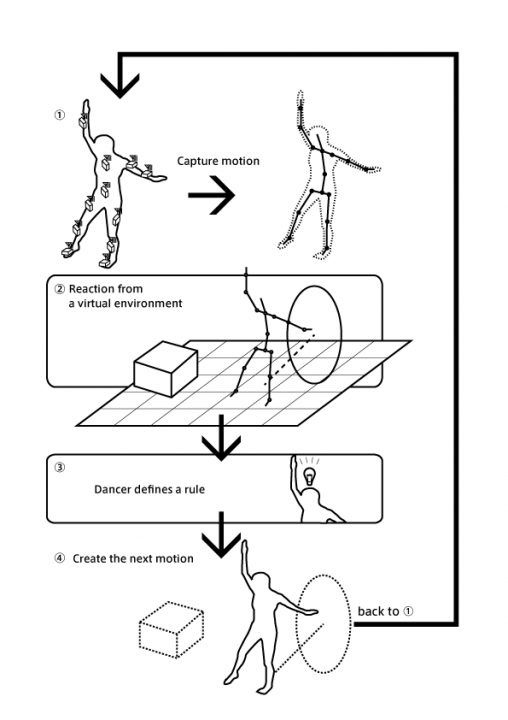
Fig,1 RAM’s conceptual diagram
Instead of developing a particular application for dance, we came to the idea to develop a tool kit that accommodates the creative needs of dancers.
Taking advantage of the power of computer programming, RAM externalizes the scenes dancers have in their minds. With RAM, dancers can visually observe their ideas and gain a real-time feedback of their movement from the environment. It enables them to experiment more with their perception and movement.
RAM Dance Toolkit, and inertial motion capture system, MOTIONER will both be made open source in order to provide a collaborative platform for future programmers who have an interest in dance and dancers who have an interest in software. To provide a means for creators to accelerate the trial and improvement process is another aim. Open-sourcing the program and encouraging other creators to examine RAM’s environment demonstrates this. RAM is a means to create, to clarify problems and to address deeper issues.
RAM Dance Toolkit
RAM Dance Toolkit is a C++ creative coding toolkit to create environments for dancers. This toolkit contains a GUI and functions to access, recognize, and process motion data to support creation of various environmental conditions (called “scene”) and gives realtime feedbacks to dancers using code in an easy way. Toolkit uses openFrameworks, a software development toolkit for artists, which means users can use functions from both RAM Dance Toolkit and openFrameworks. RAM Dance Toolkit will also be published as an application for Windows and Mac. As an application, users also can choreograph or rehearse with previously programmed scenes.
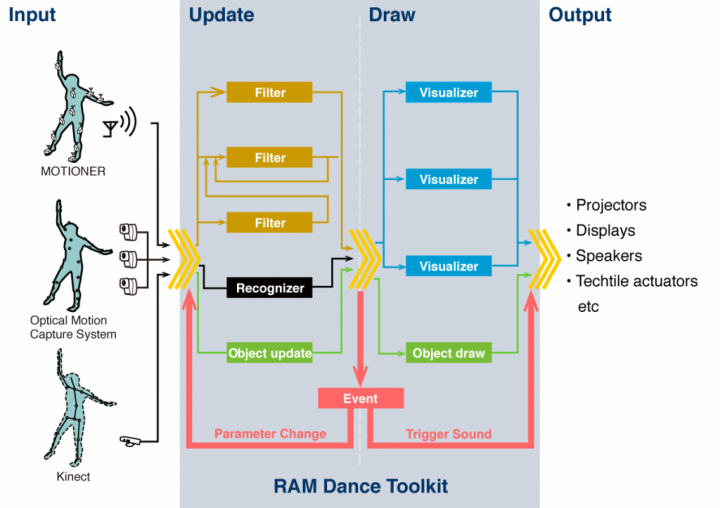
Fig,2 RAM Dance Toolkit diagram
Please check RAM Dance Toolkit page for more information.
Scenes
The pre-installed scenes provide the dancer with a way to recognize their subconscious movements by altering the dimensions of our everyday physical perception and creating a disparity from what we are used to. They inspire new ideas for dance. Here are some examples of the scenes.
“Future”
The velocity of the movement taking place between the present and a few seconds past are analyzed and used to postulate the dancer’s position in an immediate future.
“Monster”
The scene displays the length and joints of the dancer’s body parts differently from the physical reality.
“Expansion”
In this scene, the joints of the dancer are virtually expanded and displayed in the surrounding space.
“Chain”
One can attach chains to the body parts of the dancer. The degree and direction of gravity is adjustable and the chains move according to the physical calculation of the set value.
“Upside –down”
The body of the dancer is shown upside down in this scene. The point on the body that is most remote from the floor is portrayed as the floor. The walls can be made into a floor as well.
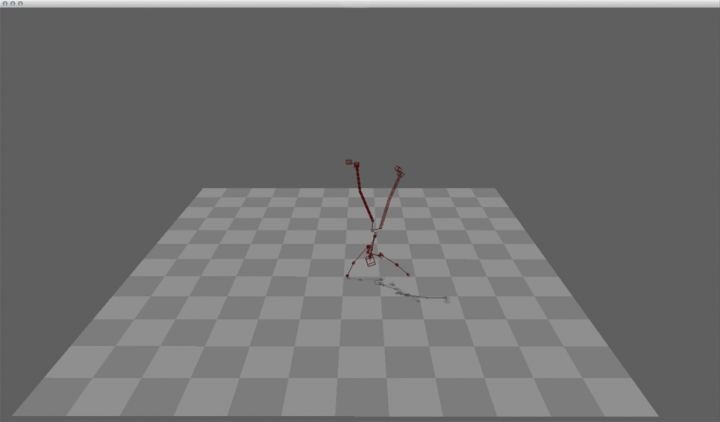
MOTIONER
MOTIONER is the inertial motion capture system developed for RAM. The computer captures the dancer’s movements via 18 sensors attached to the dancer’s body. In general, motion capture systems are very expensive and very accurate, or very cheap and very inaccurate. To address this problem we designed one which is relatively low in cost and fairly accurate. MOTIONER has been developed with feedback from Yoko Ando and other dancers that resulted in a light weight, low-stress, and low latency system. Because it’s an inertial system, users can attach the sensors inside or outside their clothing. Having made the creation process of MOTIONER open source, we look forward to seeing more creators adapt the system to their needs and give a birth to various other ways to use it. Special straps for the sensors were developed. The straps allow the sensors to be installed properly and flexibly, regardless of the dancer’s body shape. This makes effective measurement possible.
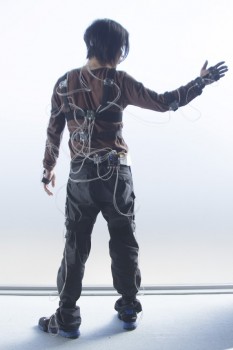
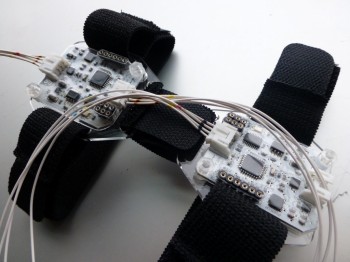
Please check MOTIONER page for more information.